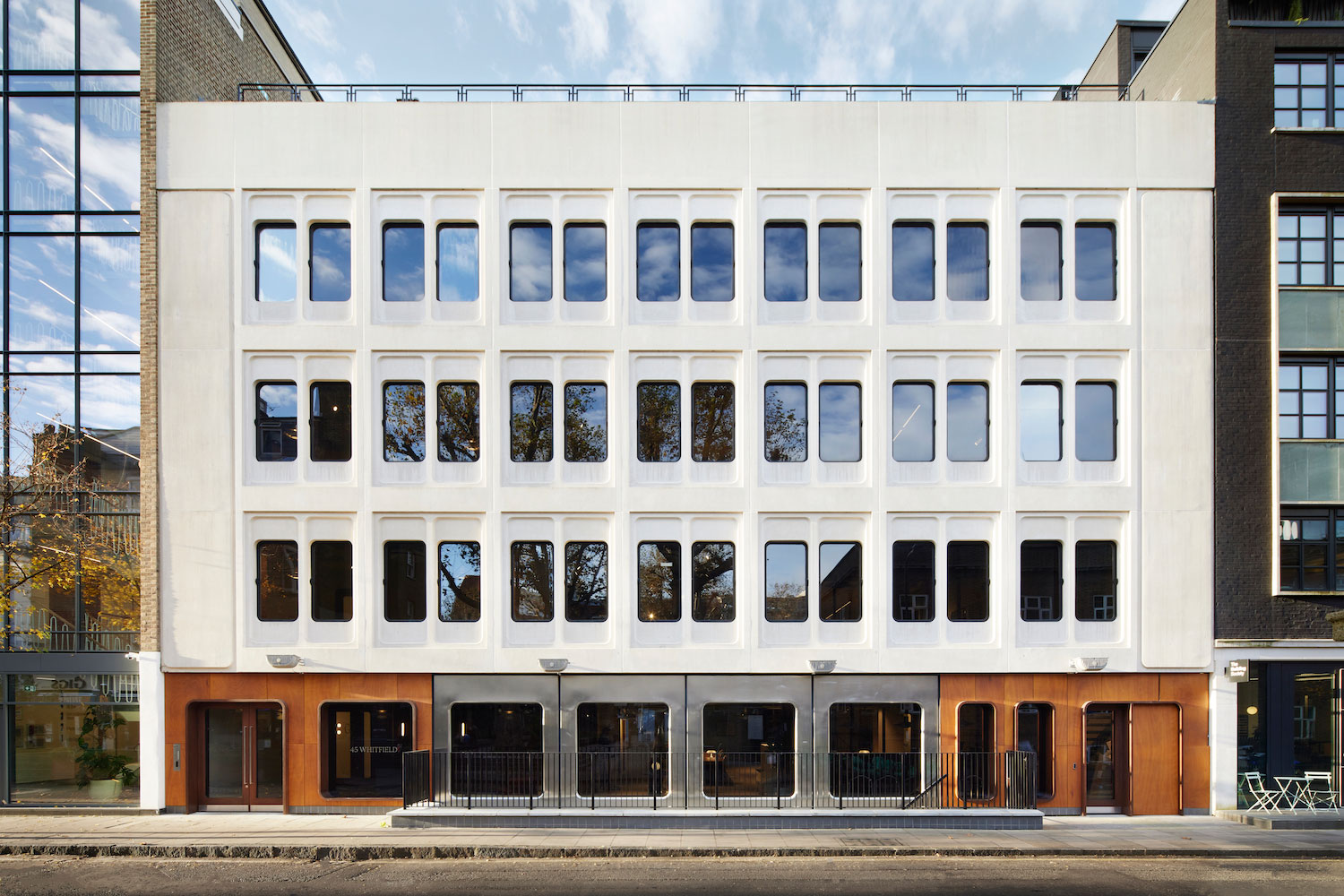dMFK Architects has brought a 1970s office building in Fitzrovia up to speed with a series of strategic alterations made to provide a modern, flexible workplace.

Photos
Jack Hobhouse
In Fitzrovia, Central London, dMFK Architects has completed the retrofit of 45 Whitfield Street, a five-storey office building from the 1970s, on behalf of client Derwent London.
Prior to dMFK stepping in, the building had undergone a series of disjointed and unsympathetic fit-outs over the past fifty years, rendering it incompatible with the needs of contemporary office workers. dMFK’s approach aimed at restoring 45 Whitfield Street to its authentic self, bringing focus back to the building’s neglected Modern attributes while addressing issues arising from evolving ways of working.
The result is 980 square metres of flexible office space, complete with expansive amenity spaces that include breakout areas for informal collaboration, private booths for focused work and calls, well-lit meeting rooms for traditional collaboration, and outdoor terraces on every floor (totalling 130 square metres).
The design also allows for future flexibility, with drop-down services enabling room configurations to be adjusted as needed by tenants in the years to come.
Instead of radically reinventing the structure, strategic alterations were made to enhance accessibility, permeability, and flexibility, achieving maximum impact with minimal changes. In a statement, Joshua Scott, director at dMFK described how pre-existing concrete soffits had been treated with mineral wash to “express texture and character, whilst increasing penetration of daylight.”
“The lozenge shaped precast concrete façade panels, original sapele window linings and stainless-steel façade panelling have informed the design of new bespoke curved timber entrance doors and reception frontage, crafted to add warmth to the raw palette of concrete and steel,” he added.

High-quality finishes inspired by the as-mentioned existing features of the building were integrated to enhance warmth and tactility. Joinery influenced by the timber lozenges of the distinctive windows at 45 Whitfield Street and a well-defined precast concrete façade have been incorporated. Recycled timber scraps, meanwhile, have been sourced from disused sawmills and repurposed as countertops, complementing the building’s dark timber surroundings and new terrazzo-style tiling, while maintaining the look and feel of the building’s ‘70s roots.
Originally, offices had low ceilings and the basement, originally designed for small 1970s cars and now obsolete parking facilities, no longer served its purpose in an era where most workers use public transport or cycle to central London. In response, dMFK focused on improving legibility, connecting floors, activating the ground level for a defined entrance, and transforming the basement for modern end-of-trip facilities.
More images
Credits
Client
Derwent London
Architect
dMFK Architects
Planning consultant
DP9
M&E
Peter Deer Associates
Civil and structural
Akera Engineers
Fire
OFR
Building control
SWECO
Quantity surveyor
Aecom
Project manager
RougeMont
Principal designer
BlackCat
Wayfinding and signage
POST
Source: Architecture Today



